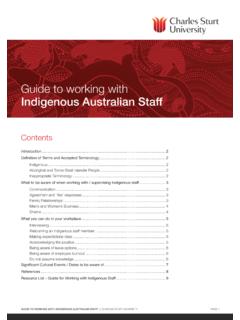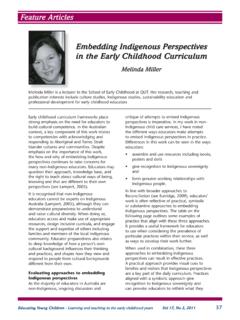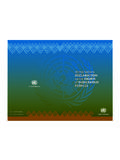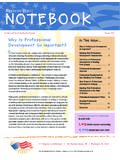Transcription of 2014 North American Indigenous Games …
1 Praxis 150 2 Research Drive, Regina, SK S4S 7H9 2014 North American Indigenous Games evaluation report November 2014 Praxis 150 2 Research Drive, Regina, SK S4S 7H9 2014 NAIG evaluation Highlights Sports Involvement 96% of participants indicated their intent to stay actively involved in competitive sport after 2014 NAIG 26% indicated entering into competitive sport as a result of 2014 NAIG Lifestyle Choices 52% of athletes improved the healthiness of their diets for 2014 NAIG 97% indicated their intent to maintain their healthy diets post-2014 NAIG 70% of athletes indicated their intent to pursue at least a University degree 25% of athletes indicated their intent to pursue a graduate studies designation 52% of participants believed NAIG had an influence or great influence on their decision to pursue further education Self Confidence and Worth 77% believed they felt different about themselves after participating in 2014 NAIG 91% believe that others in their communities saw them as role models 69% felt that their experience at 2014 NAIG
2 Positively influenced the way others saw them 89% said they felt more confidence from competing in 2014 NAIG 63% felt more connected with their Indigenous heritage as a result of 2014 NAIG Praxis 150 2 Research Drive, Regina, SK S4S 7H9 1 North American Indigenous Games 2014 Games evaluation Final report November 2014 Executive Summary Background: Praxis Consulting was engaged by the North American Indigenous Games Council to conduct an evaluation of the impact of the 2014 NAIG on participants and team volunteers. The research process included a mix of a quantitative survey and qualitative interviews and focus groups. The research tools posed questions to athletes, volunteers, mission staff, etc. within 5 themed areas: 1. Sport participation; 2. Competitive sport participation; 3. Physical health; 4. Lifestyle choices; and, 5. Self-worth/Self-perception. Summary of Findings: Typical NAIG Participant NAIG participants are very involved in sport and competitive sport.
3 Many participants engage in at least 20 minutes of physical activity a day and live active lifestyles. The majority of athletes focus on specific areas of sport to compete in but also participate in other mainstream sports to augment their healthy lifestyles. One of the reasons why NAIG attracts many participants already engaged in sport can be correlated to how athletes become aware of the Games . Many athletes became aware of NAIG because of their coaches or from friends and family that had previously participated at NAIG. Meaning that reliance on word of mouth through the sports community will inherently attract more athletes already participating in sport. NAIG Influence Though a majority of participants were previously involved in sport and competitive sport, there is still a large minority of individuals that have little to no competitive sports backgrounds. There are indications that NAIG does affect some of these individuals to maintain their involvement in sport after the Games have subsided.
4 NAIG also provides athletes with an opportunity to discover sports that aren t prevalent in mainstream sports systems. These sports also have a tendency to traditionally have cultural significance such as marathon paddling, archery, or rifling. There is some evidence that suggests that NAIG does influence participant diets. Participants indicated that they ate much healthier in preparation Praxis 150 2 Research Drive, Regina, SK S4S 7H9 2 for NAIG 2014 by removing junk foods, carbs, and shifting to vegetable and fruit rich diets. Participants also stated that post-NAIG they plan to maintain their healthier lifestyle. However, some athletes did indicate that financial and accessibility issues around healthy foods did prevent them from being able to implement their intended healthier diets. NAIG Participants vs. Non-Participants Respondents also indicated that participation in sport positively impacted the way they make life choices.
5 Many participants stated that friends who don t participate in sport in their home communities ate unhealthier, did not engage in daily physical activity, and engaged in negative social behaviour such as underage drinking, drug use, and not attending school. Participants felt that being engaged and busy in sport prevented them from engaging in this type of detrimental social behaviour. Education The majority of participants were currently in high school pursuing a high school diploma. When prompted as to what level of education will you pursue in the future, a significant majority of respondents stated they would pursue at least a university degree (70%). Some of these respondents also suggested that they intend to pursue future schooling in a graduate program (25%). When prompted on whether NAIG influenced their decision to pursue future education, a majority believed it positively affected their decision (52%).
6 An observation made by NAIG volunteers suggested that by having the Games at the university helped address some of the misinformed fears that athletes held previously. The venue provided them with an opportunity to indirectly experience the university lifestyle. Mental and Physical Preparation Though a majority of participants come from competitive sport backgrounds, there is a large minority of participants with little competitive sports experience. Game volunteers were concerned with these non-competitive sport athletes having a negative experience due to their unrealistic expectations and lack of competitive experience. Many felt that these athletes needed to be better mentally and physically prepared before participating in the competition. Confidence and Self Esteem A majority of participants felt that experiencing NAIG gave them more confidence, pride in being Aboriginal, and more influence in their home communities.
7 Many from smaller communities noted how the entire community would closely follow their success and younger kids would be looking up to them as role models. Young girls were also identified as having a more positive perception of themselves and their abilities as they competed alongside male competitors in some sports. Cultural Connection The number of Aboriginal youth that participated in NAIG provided a comfortable environment for athletes to compete in. Many commented on the discomfort that Aboriginal youth had experienced being on mainstream sports teams as a significant minority. NAIG provided them with an environment free of stereotyping and racist elements that can sometimes be experienced in mainstream sport. NAIG also provides the unique opportunity for athletes to carry out culturally significant activities that help them focus and prepare for competitions. Praxis 150 2 Research Drive, Regina, SK S4S 7H9 3 Table of Contents Executive Summary.
8 1 NAIG Background ..4 Purpose of the evaluation ..4 Methodology Used ..4 4 Interviews and Focus Groups .. 5 Key 1. Sport Participation .. 6 2. Competitive Sport .. 6 3. Physical Health .. 8 4. Lifestyle Choices .. 9 5. Self- 11 Consultant Insights and Recommendations of Future Evaluations .. 12 Appendix A .. 14 Survey Questionnaire .. 14 Appendix B .. 21 Quantitative report .. 21 Appendix C .. 86 Interview Protocol .. 86 Appendix D .. 87 Focus Group Protocol .. 87 Appendix E .. 88 Qualitative report .. 88 Praxis 150 2 Research Drive, Regina, SK S4S 7H9 4 NAIG Background The North American Indigenous Games (NAIG) is a tri-annual sporting and cultural event for participants of Indigenous background in the United States and Canada. The Games are designed to alternate between Canada and the United States. Regina, Saskatchewan is the most recent host city and held the 2014 NAIG. Purpose of the evaluation The purpose of the evaluation of the 2014 NAIG in Regina is to better understand the social impact that the Games generate for participants.
9 NAIG is a unique combination of sports and cultural activities with Aboriginal participants not seen anywhere else in North America. The intent of the report is to convey findings generated from the research process. It was not within the scope of the evaluation to research the delivery of the 2014 Games or the logistics of the Games . Data gathering was limited to athletes and team volunteers including coaches and mission staff. Host society volunteers and staff were not included in the evaluation . Methodology Used The research process included a mix of a quantitative survey and qualitative interviews and focus groups. The research tools posed questions to athletes, volunteers, mission staff, etc. within 5 themed areas: 6. Sport participation; 7. Competitive sport participation; 8. Physical health; 9. Lifestyle choices; and, 10. Self-worth/Self-perception. Survey The survey conducted for 2014 NAIG is statistically significant at 95% confidence with a total response rate of 589 completed questionnaires.
10 This consisted of 265 hard copy responses and 324 online responses. (The survey questionnaire is attached to this report as Appendix A) The sampling format creates a non-probability quota sample. A probability sample of this size would yield a general margin of error of plus or minus at the 95% confidence level. Praxis Analytics references this margin of error range as a practical tool that can be used to help approximate the limits within which it is likely that actual opinion would be found if all persons in the population were interviewed. In order to facilitate greater survey participation, individuals who completed the questionnaire automatically entered a random draw for one of five $100 Visa gift cards. Praxis 150 2 Research Drive, Regina, SK S4S 7H9 5 The full quantitative report on specific survey findings is attached to this document as Appendix B. Interviews and Focus Groups There were 11 interviews conducted during the week of the competition with a number of key informants, who were identified as individuals with unique or in-depth insights into NAIG.






![[Title]: Traditional Ecological Knowledge - Silva For](/cache/preview/3/7/5/d/5/1/2/0/thumb-375d512018e32de09e9c7f6503e5fcc5.jpg)